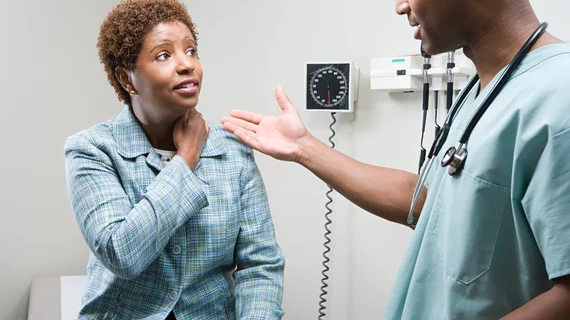Sex-specific thresholds for troponin assays improve MI care for women—but not nearly enough
Using sex-specific thresholds for high-sensitivity cardiac troponin I (hs-cTnI) assays identified five times more heart attacks in women in a recent study of patients with suspected acute coronary syndrome (ACS), but major disparities persisted when it came to treating MIs.
First author Kuan Ken Lee, MD, of the British Heart Foundation Centre for Cardiovascular Science at the University of Edinburgh, and colleagues said in the Journal of the American College of Cardiology that while the development of hs-cTnI assays has been hugely helpful for the field of cardiology—the tests have revealed previously unknown sex differences in the reference range of cardiac troponin—the use of single diagnostic thresholds for such assays has been questioned.
“We have previously demonstrated that the use of a high-sensitivity assay with sex-specific thresholds may double the diagnosis of myocardial infarction in women and identify women at risk for future cardiac events,” Lee and his team, who spearheaded the High-STEACS (High-Sensitivity Troponin in the Evaluation of Patients With Suspected Acute Coronary Syndrome) study in 2018, wrote in the journal.
“This raises the question as to whether the use of single diagnostic thresholds has contributed to inequalities in the diagnosis, management and outcomes of women with ACS.”
In High-STEACS, Lee et al. found their hs-cTnI assay reclassified one in six patients with myocardial injury, but that benefit didn’t translate into a reduction in recurrent MI or cardiovascular death at one year. For this study, the researchers enrolled 48,282 consecutive patients with suspected ACS in their stepped-wedge, cluster-randomized controlled trial, which spanned 10 hospitals.
Myocardial injury was defined in the study as a high-sensitivity cardiac troponin I concentration exceeding the 99th percentile of 16 ng/l in women and 34 ng/l in men. In line with their previous work, Lee and colleagues’ primary outcome was recurrent MI or CV death at one year.
Women made up about half of the authors’ study population, comprising 47% of the total pool. The use of a hs-cTnI assay with sex-specific thresholds increased their rates of myocardial injury by 42% compared to 6% in men.
Still, even though sex-specific thresholds identified five times more additional women than men with myocardial injury, after implementation women remained less likely than men to undergo coronary revascularization (15% vs. 34%), receive dual antiplatelet therapy (26% vs. 43%) or be prescribed statins (16% vs. 26%). The study’s primary outcome occurred in 18% and 17% of women with MI before and after implementation, respectively, compared to 18% and 15% of men, respectively.
In a related JACC editorial, Allan S. Jaffe, MD, and Sharonne N. Hayes, MD, both of the Mayo Clinic, said the null effect of sex-specific thresholds in Lee et al.’s trial was “not surprising.” Even in patients with type 1 MI, they wrote, women were 20% less likely to undergo coronary angiography than men.
The editorialists questioned the potential mechanisms behind the sex disparities, ruling out age and comorbidities because gaps were seen with both younger and older women and comorbidities were similar between the sexes. They said it also wasn’t likely that treatment gaps are the result of a miscommunication about symptoms.
“The frequencies of chest discomfort and electrocardiographic changes were different but not wildly discrepant,” Jaffe and Hayes wrote. “It is clear from this study that simply improving diagnostic accuracy cannot remedy deeply embedded gender disparities in attitudes, practice and outcomes. Simply put, if one does not act on the data, no diagnostic test will ever have additional worth.”
The study’s five-fold reclassification rate is much higher than others, the pair said, which might be due to discrepancies in study populations, assay sensitivity and diagnostic criteria. Because that data can differ so widely from study to study, Jaffe and Hayes said this data might not be widely applicable to global populations.
“Do we need a different paradigm for evaluating women with suspected ACS?” they asked. “The High-STEACS results point to an obvious conclusion: state-of-the-art, sensitive, sex-specific testing can improve the diagnostic accuracy of myocardial injury in women, but it will take more than diagnoses with greater accuracy to modify clinician behavior and improve outcomes.”

